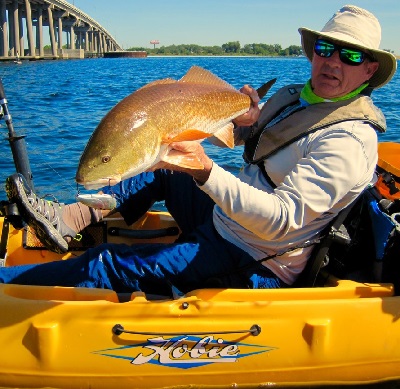 “Do you use fluorocarbon?” In 20 years, I have never taught a fishing seminar in which someone from the audience didn’t pose that question. My answer is honest but invariably noncommittal.
“Do you use fluorocarbon?” In 20 years, I have never taught a fishing seminar in which someone from the audience didn’t pose that question. My answer is honest but invariably noncommittal.
“Yes, but if I had to pay for it, I’m not sure I’d use it as often.”
Free or cheap fishing tackle is one of the perks of being a longtime outdoor editor. But having fished virtually all of my life, I recall catching plenty of fish prior to the advent of dollar-a-yard fluorocarbon leader. Did fish suddenly grow wiser, or their eyesight undergo a miraculous upgrade, necessitating the added expense?
Until a couple years ago, the majority of my fishing was comprised of chasing 15- to 20-year-old, 30-inch spotted seatrout or 40-inch snook in a foot or two of crystal clear water in the southern Indian River Lagoon. To consistently catch wary trout that have survived that long, an angler needs to have every advantage on his side. I had no problem justifying the use of leader that at least theoretically is invisible underwater. Big snook posed a different problem—incredibly abrasive teeth, razor-sharp gill plates and a bad habit of charging into structure, all of which chew up light monofilament. Thirty-pound fluorocarbon leader offered an effective balance of stealth and abrasion resistance to counteract both situations.
However, I moved to the upper Gulf of Mexico two years ago. Unless storms stain the water, I still try to sneak up on fish on gin-clear flats a foot or two deep, but the winter is too cold for snook, and 30-inch trout are rare. So far, feeding a lure to Gulf Coast redfish, trout and flounder appears to offer a somewhat lower degree of difficulty than the fish I previously pursued. So I started thinking—do I really need fluorocarbon anymore?
October seemed a perfect time to experiment. Virtually no rain for a month, several weeks of wind finally died, and we dodged Hurricane Matthew. The water has cooled, and the grass flats are as clear as any in the Bahamas. I snipped off my fluorocarbon and found a spool of plain old Ande 20-pound clear monofilament that had taken refuge in the bottom of an office desk drawer for who knows how many years. I tied three feet to my standard 10-pound braid, attached a mix of hard and soft-plastic lures with my usual loop knot, and kept track of the results for a week.
To up the difficulty factor, I spent most of the week sight-fishing redfish over open sand in the middle of the day, some of the fish eating a mere 10 to 15 feet from the kayak. I actually experienced my best week of trout fishing in the last six months, although I tend to attribute that to cooling temps and more fish moving up shallow to gorge on plentiful bait schools. However, the mono leaders obviously didn’t deter the bite. At the end of the week, there was no change in my usual dozen redfish per afternoon average. And if monofilament works in clear water, there would seem to be even less need to spend big bucks to fish fluorocarbon under murky conditions.
I’ll be the first to declare that my anecdotal observations are far from hard science. Unless I’m looking for pompano or flounder, I generally prefer lures that put out a lot of flash or vibration, which probably somewhat distracts fish from whatever leader I use. But I am sufficiently satisfied with the results that, for the time being, I’ll reserve the expensive fluorocarbon for road trips to chase more finicky species, or for working small, subtle soft-plastics.
